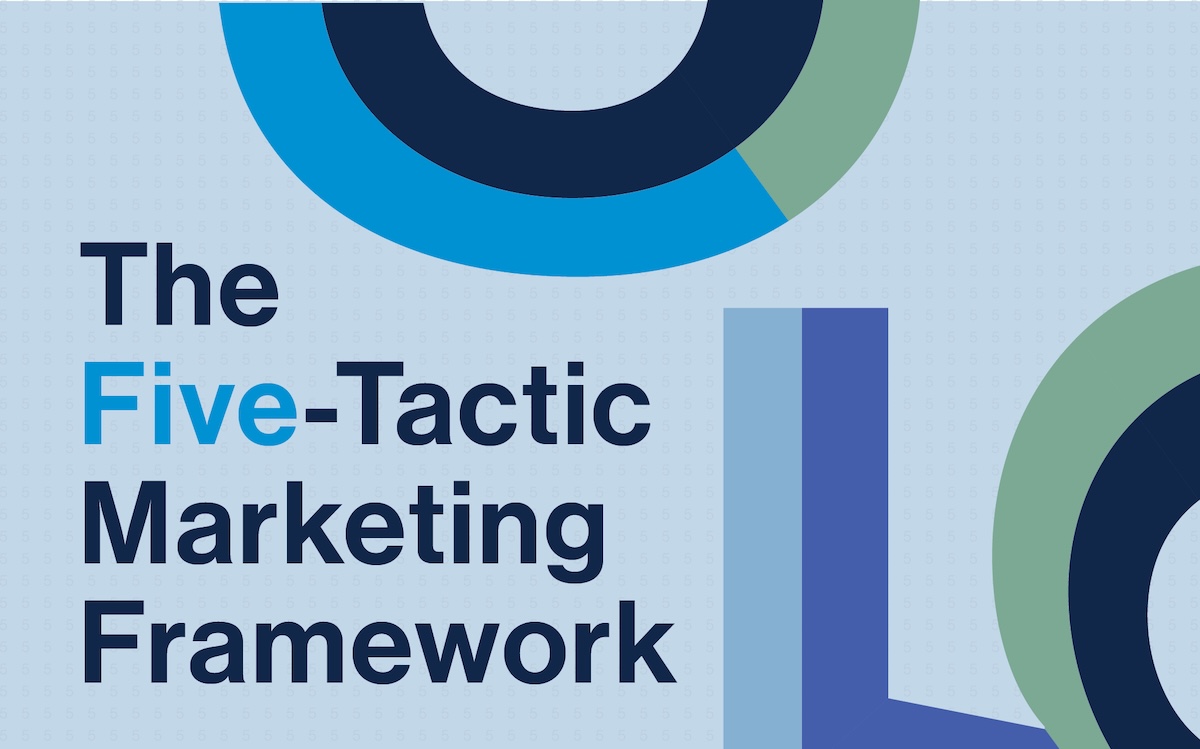The Five-Tactic Marketing Framework

The days of relying on venture capital to bail out struggling marketing campaigns are long behind us. Profitability is the number one concern for SMBs, which means that every marketing dollar needs to count.
You’ll need a multifaceted approach that I like to call the “Five-Tactic Marketing Framework.” It combines
- Brand marketing that focuses on recognition and reputation paired withPerformance marketing that concentrates on campaign performance and ROI
- A Lifetime Value Framework (LVF) that allows marketers to reverse engineer spending allowables based on customer lifetime value (CLTV).
- A deep understanding of your customer in order to design creative and messaging that will truly resonate with the target market
- Integrated campaigns that are deployed across multiple channels
- Artificial intelligence tools that can introduce new efficiencies and possibilities.
Brand and Performance Marketing
Marketers will often silo themselves into brand or performance marketing.
They shouldn’t.
95% of B2B customers aren’t interested in buying something right now. But they will be ready sometime in the future. That’s the power of brand marketing. It makes sure that your company is top of mind when they’re ready to convert by increasing the mental availability of your brand.
Now let’s say that the same B2B customer is ready to convert. This is where performance marketing comes in. It’s a call to action that gets that customer to act. There’s an extraordinary power to seeing them both combined at a 50/50 spend.
Lifetime Value Framework
The Lifetime Value Framework takes Customer Lifetime Value (CLV) and reverse engineers a maximum allowable marketing spend for each stage of the funnel.
Once you know your CLV, you can use it to determine allowable customer acquisition costs (CAC), costs per thousand impressions (CPM), costs per lead (CPL), and costs per acquisition (CPA). You now have maximum allowables for each stage of the funnel.
Using a Lifetime Value Framework creates a self-sustaining financial model. Every impression, lead, and conversion is paid for using profits from prior sales. This frees us from inflexible marketing budgets, and gives every campaign the chance to run at its maximum potential.
Understanding Your Customer
At the core of any integrated marketing campaign are two critical questions: who are we speaking to, and where are we reaching them?
Campaign success will always begin with a deep and multifaceted understanding of your customers. You’ll need to know the ins and outs of their jobs, challenges, and motivations.
You need good data to conduct this analysis. It’s crucial not to rely on assumptions or personal biases, as these can lead to ineffective marketing efforts and wasted resources. Marketers have to observe and empathize with their target audience, viewing the market objectively to truly connect with customers. Importantly, none of this will matter without product–market fit; even the best marketing can’t compensate for a misaligned product.
Integrated, Multi-Channel Execution
Integrated and multi channel campaigns have several benefits. They:
- Ensure consistent messaging across platforms, which in turn reinforces your brand in consumer memory.
- Reach a wider audience, engaging customer segments where they are.
- Allow for an efficient use of scarce resources by avoiding duplication and ensuring that channels complement each other.
- Produce valuable data about performance across channels, allowing you to double down on what’s working.
Effective multi-channel execution will be far more impactful than single channel. Multi-channel execution leverages strengths across platforms—social, email, paid ads, content marketing, and more—and creates a cohesive experience for your audience. You’ll meet your customers where they are, which will lead to higher engagement and conversion rates.
A well-executed multi-channel strategy maximizes your reach, strengthens brand consistency, and enhances the overall customer experience—driving better long-term results.
The Power of Generative AI in Ideation, Analysis, and Optimization
Generative AI is revolutionizing marketing by making it more scientific, efficient, and predictable—all while sacrificing little creativity.
AI can enhance the iterative process inherent to any marketing campaign by quickly generating customer personas, campaign ideas, and materials. All this reduces the time needed for ideation and draft development, amplifying the output of even the smallest marketing teams. And while AI may not produce a perfect ready-to-ship product, its ability to rapidly iterate makes it essential and transformative for early-stage work in marketing.
Beyond creation and ideation, AI tools can streamline complex tasks like campaign attribution, data analysis, and real-time adjustments. Work that previously required large teams and significant manhours, like processing massive datasets, identifying patterns, and finding the best attribution models, can now be done quickly and easily. AI’s ability to visualize data further enhances efficiencies by automating tasks once reliant on human input.
Finally, AI plays a pivotal role in optimizing marketing efforts. By identifying sales trends, tracking profitability, and improving campaign performance predictions, AI allows businesses to stay competitive and nimble. When Generative AI is integrated into creation, operation, and optimization processes, modern and nimble marketing teams can break past sales barriers and achieve growth.
The “Five-Tactic Marketing Framework” offers a robust approach for SMBs. It combines brand marketing for recognition, performance marketing for measurable ROI, and a Lifetime Value Framework (LVF) that optimizes spending based on Customer Lifetime Value (CLV).
This comprehensive approach ensures that marketing efforts are both efficient and impactful, turning every campaign into an opportunity for profitability and growth.